Renner Safaris
SAFARI NEWS WITH PAUL RENNER
February 2018 Tanzania & Kenya Photo Safari
We are excited because we have received prices for our 2019 safaris. These trips are high quality, exciting photo adventures that will take you to the best places in Africa for photographing wildlife! You do not need to be a photographer but you should enjoy watching animal behavior because that is what makes the wildlife so interesting.
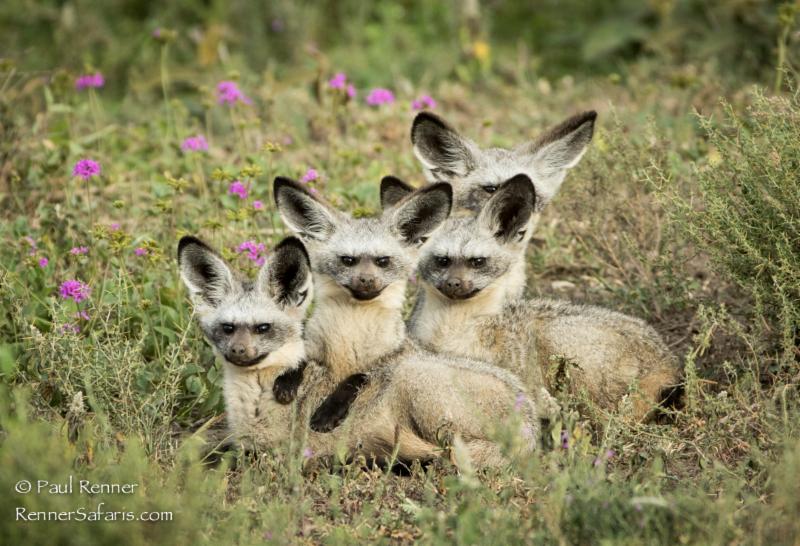
A family of Bat-eared Foxes huddled together for warmth on a cool February morning. These cute, little guys are extremely hard to photograph because usually when seen, they either get up and run away or immediately dive down their burrows and hide.
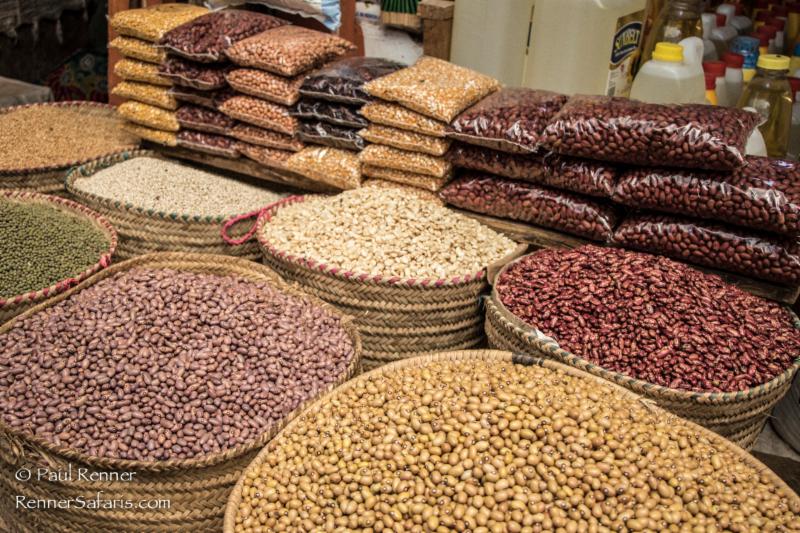
In Arusha, we visited a market where local people sell their crops and merchandise.

My Swahili comes in very handy in situations like this where I always ask if I may take their photo. I am happy to pay them for photos if they ask for money. Think how much actors and actresses are paid for their pictures.
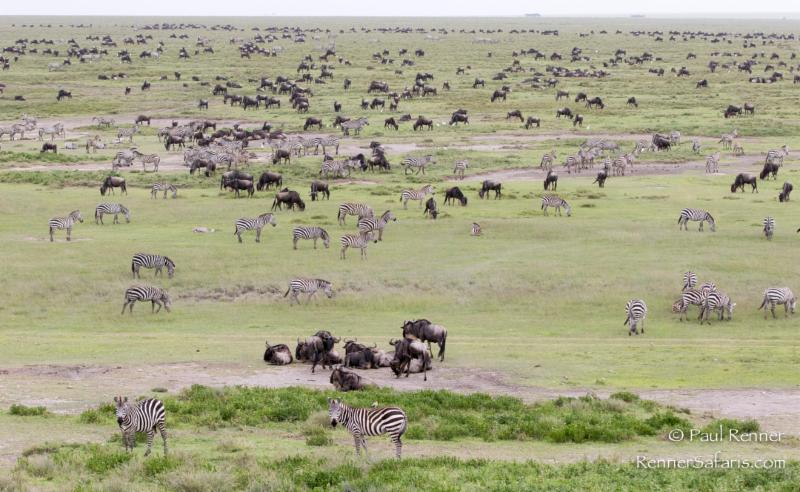
Along the way to our first camp, we saw thousands of animals, even before arriving at our luxury permanent camp. The great migration had arrived on schedule!
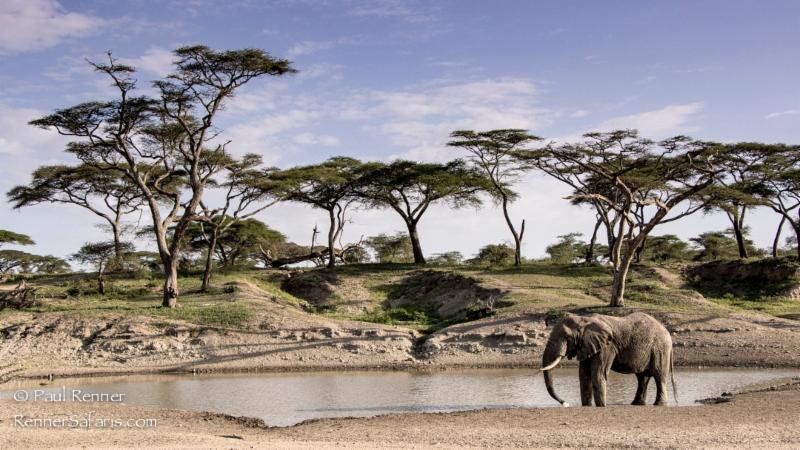
An elephant was enjoying some time by himself at a waterhole just below our camp. My excitement was building as I thought about the exciting possibilities of what the next day’s adventures held

He appeared to be enjoying his alone time at the water and took as much time as he wanted.
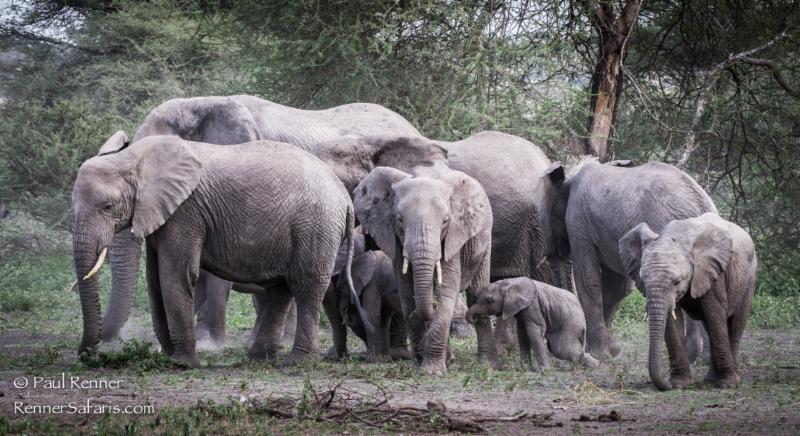
We found this herd under a canopy of thorny acacia trees along a riverbed.
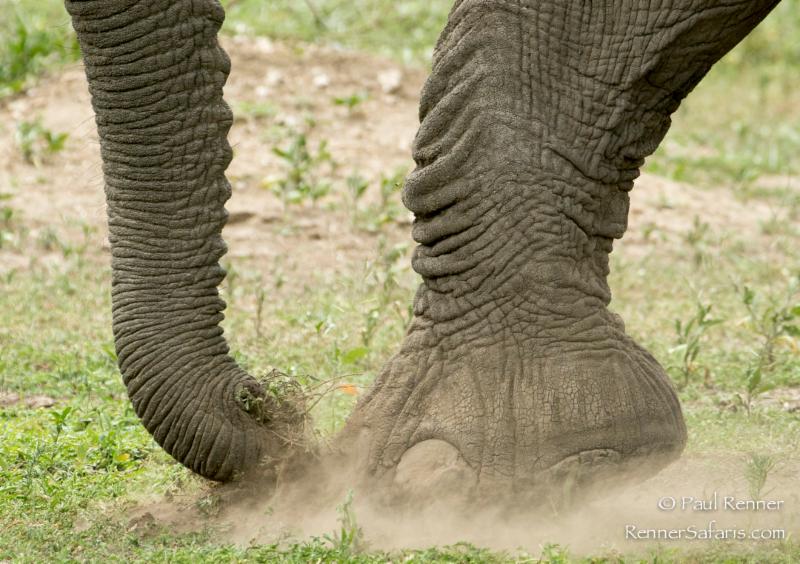
On our trips, we spend the time it takes to observe interesting behaviors of the wildlife. An elephant grasps a clump of grass with its trunk and then kicks it out of the ground with its foot. Next, it shakes out the dirt before raising it to its mouth to eat.
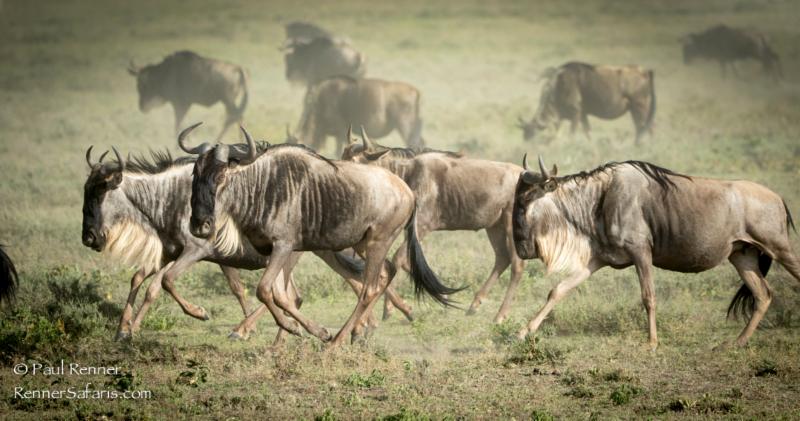
Wildebeest are often considered to be the clowns of the savannah. They run, jump and chase each other throughout the day, often with no apparent reason other than just having fun. They love to run! We were lucky and saw quite a number of wildebeest babies actually being born . My photos of the births are graphic and may bother some people so I have put them down at the end of the newsletter.

Lake Masek lies within the 750-mile route of the great migration. The wildebeest and zebras could walk another half mile and go around the end of the lake to avoid the danger of getting stuck in the soft mud on the far side of the lake where many have perished
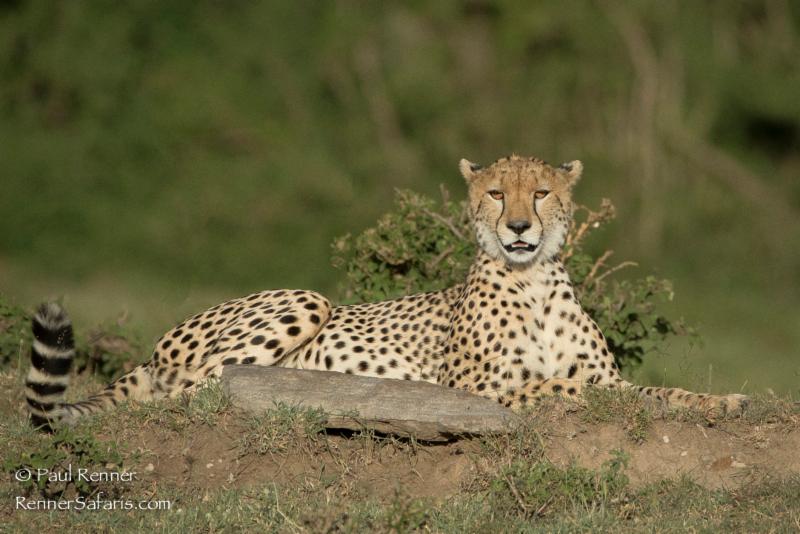
Finding cheetahs in the early morning or late evening is always a stroke of good luck. This is when we have the best opportunity to photograph the beautiful golden color of their eyes because the sun is low and illuminates their eyes. Toward mid-day the sun is too high to shine into the deep set eyes which then have a tendency look like black holes.
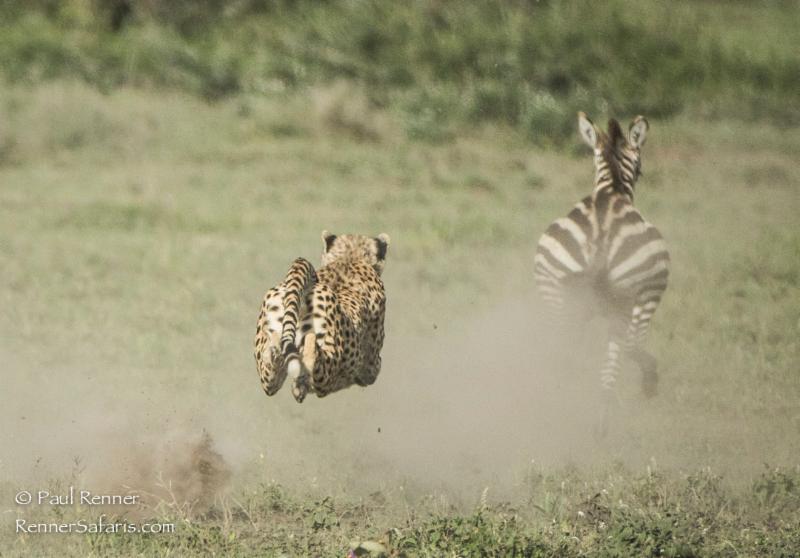
The cheetah appears to be flying through the air in hot pursuit of the zebra. We had just pulled up to the sighting of two cheetahs and I was adjusting the settings on my camera for high-speed shooting when the first cheetah took off running. Their acceleration and speed are incredible and most outstanding to watch live!
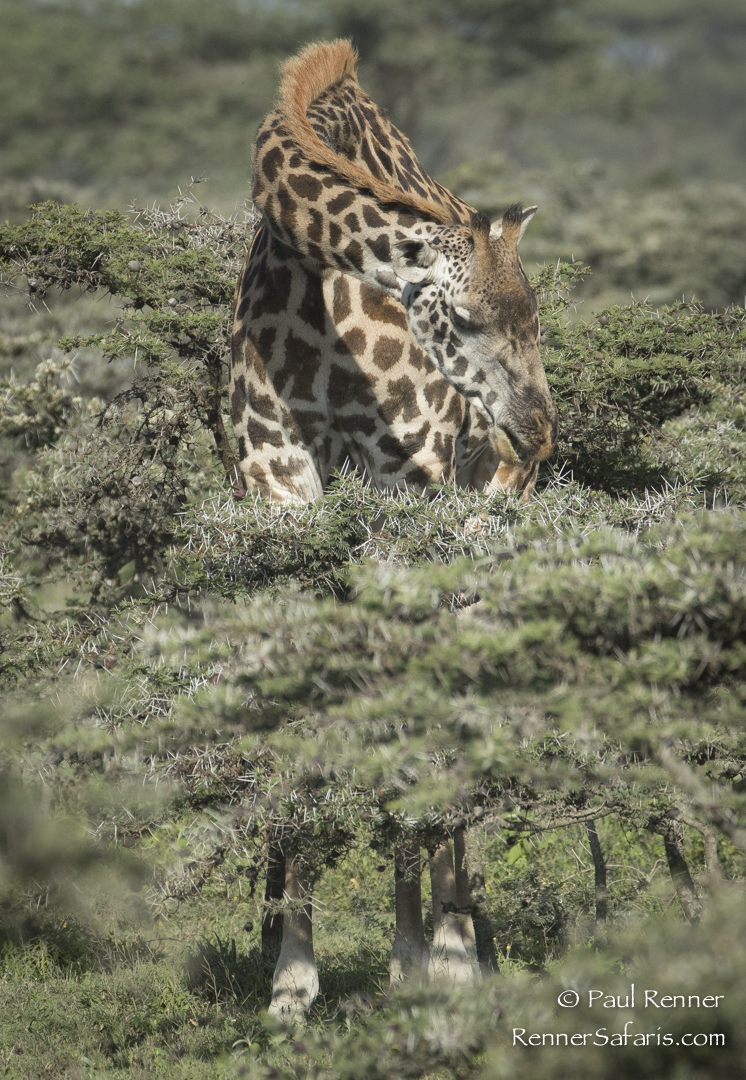
I am always intrigued when I watch giraffe eat the acacia bushes. They seem to ignore the extremely sharp thorns. They just bite off branches and swallow them, thorns and all.
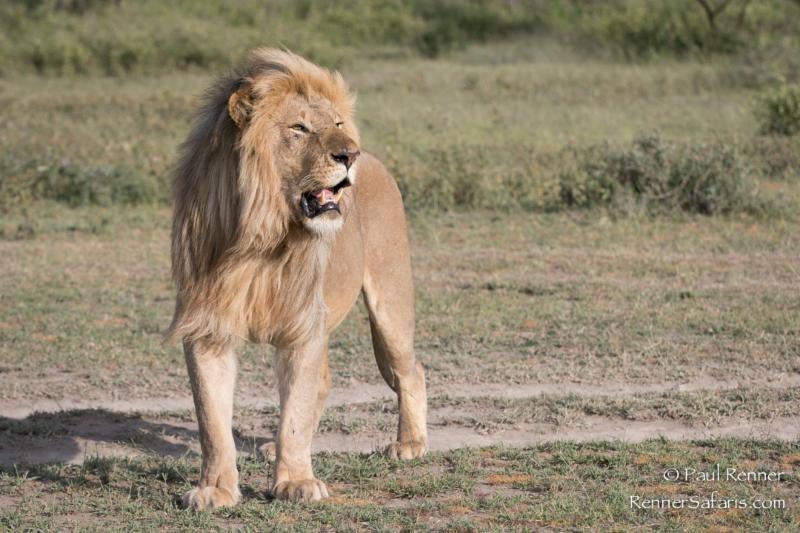
The blond-maned lions of Ndutu are quite well known. This one, I thought was particularly handsome as he stood with his face to the light breeze.
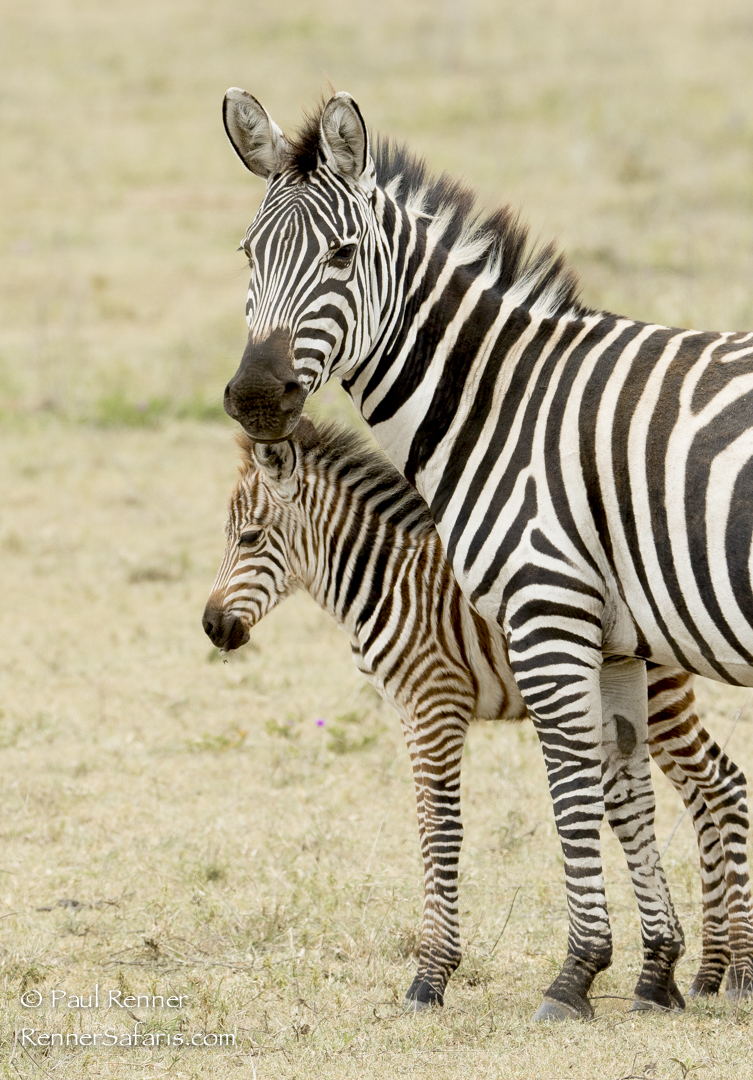
We also saw lots of zebras with their foals. The little ones are so cute!

One evening we were excited to find a striped hyena! He would not, however, turn and look at the camera! It was such a rare find that I was still pleased to have seen it
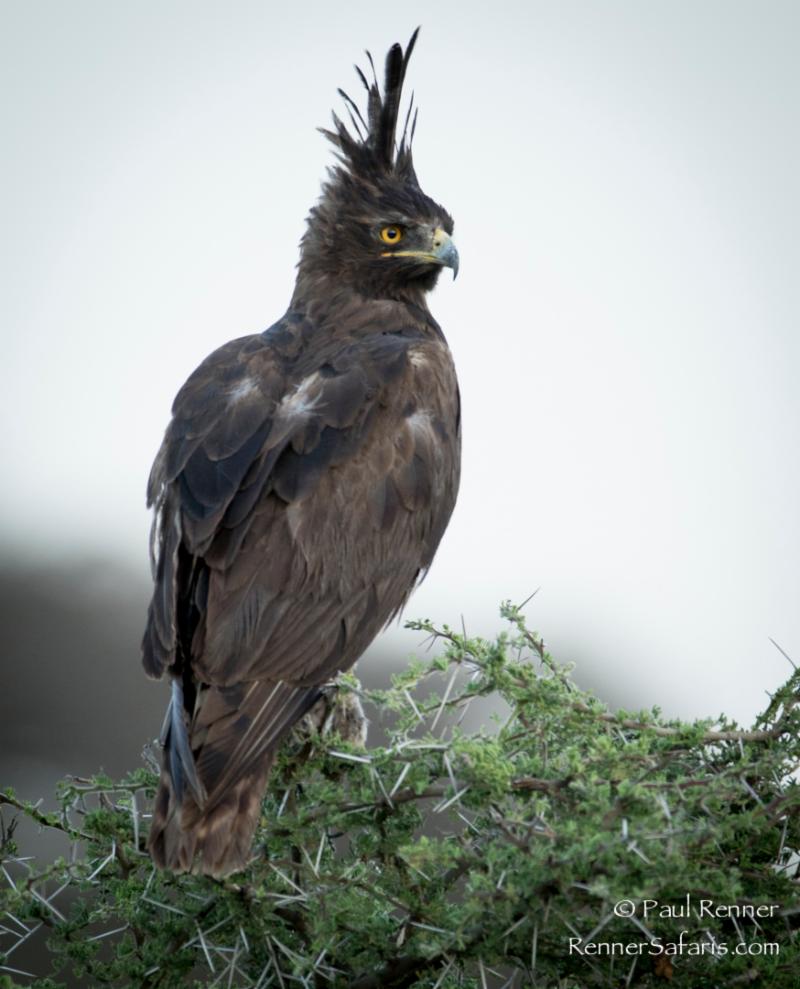
The watchful yellow eyes of the Long-crested Eagle provide a nice contrast to the dark feathers of the bird.
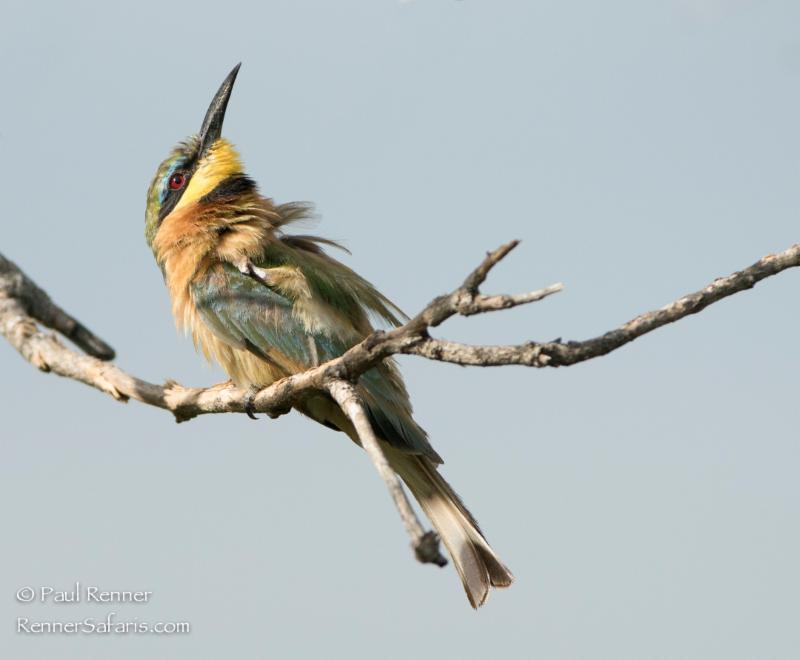
This Little Bea Eater twisted its neck so it could keep its eyes looking skyward in search of bees or other flying bugs that would make a tasty snack. I thought that it would definitely need a chiropractor to fix the kinks in its neck looked up for too long.
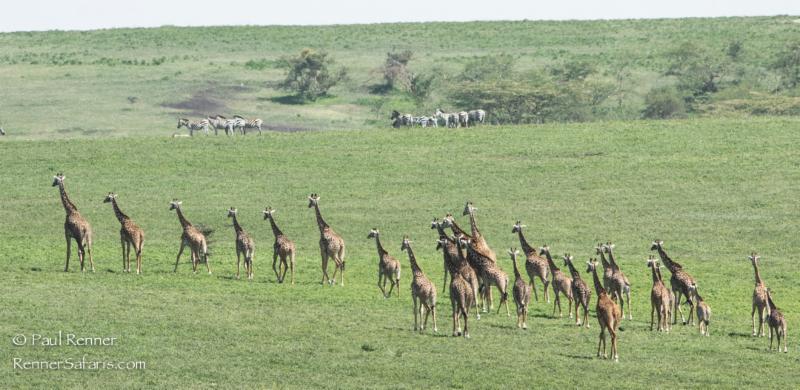
As we said goodbye to the Ndutu area and moved on toward Ngorongoro Crater, a large herd of 25 giraffes crossed the road and went down in a stream bed below us.
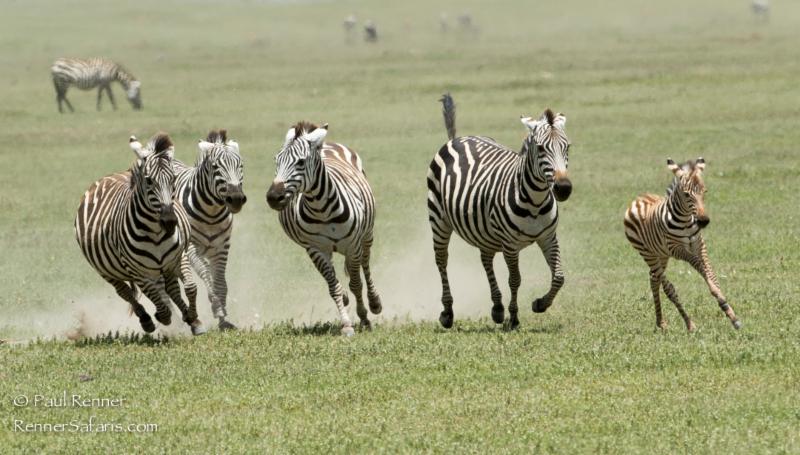
Upon entering the Crater we were treated to a group of zebra running around chasing each other. There was a mare with a young foal and three stallions. The mare appeared to be in heat but because of the foal, she was not interested in mating.
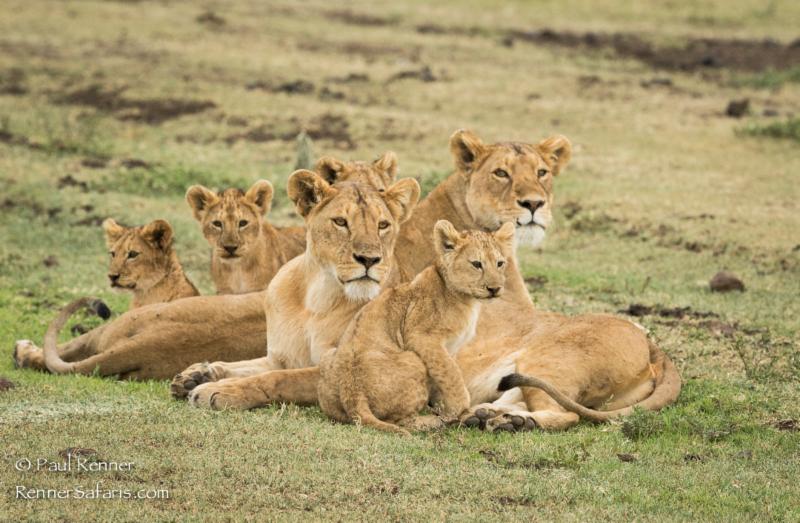
Some members of the Munge lion pride was gathered together, almost as if posing for a family portrait.
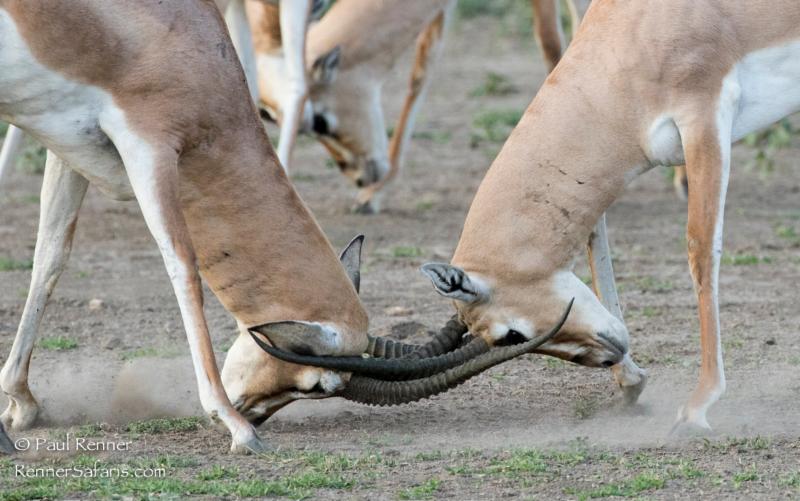
Grants Gazelle bucks were busy sparring with hopes of eventually impressing some females and gathering together a harem.
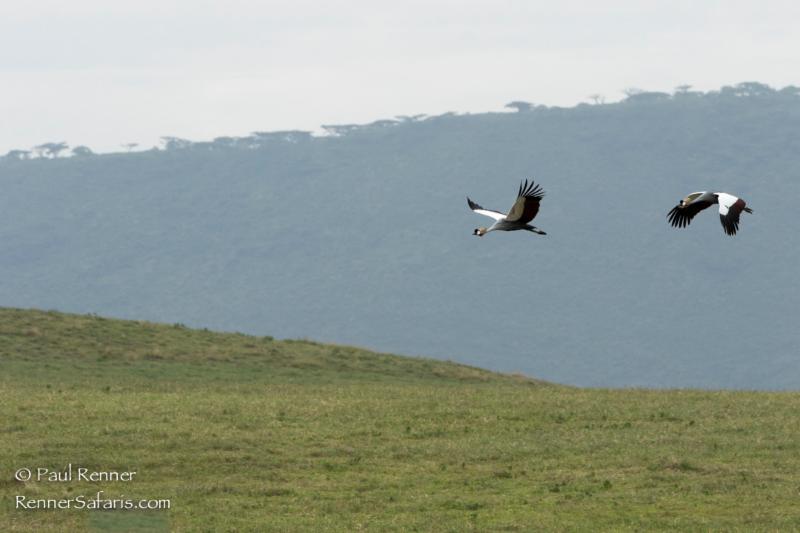
Grey Crowned Cranes flying.
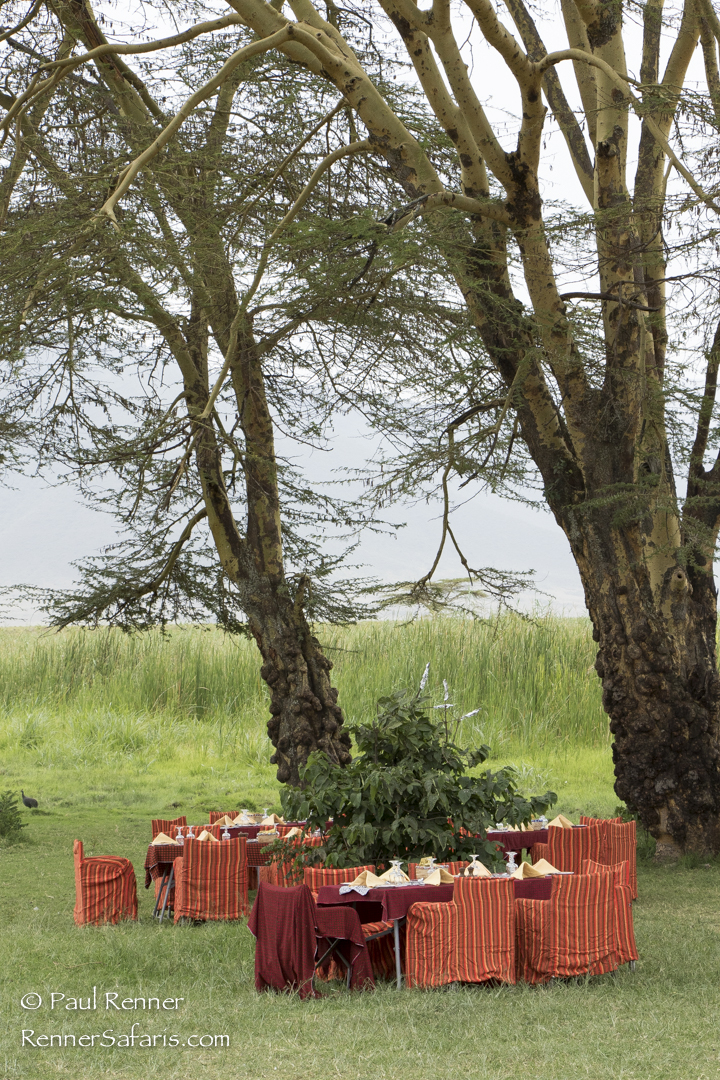
It was almost lunchtime and we were driving towards the acacia forest when we arrived upon this welcome scene.
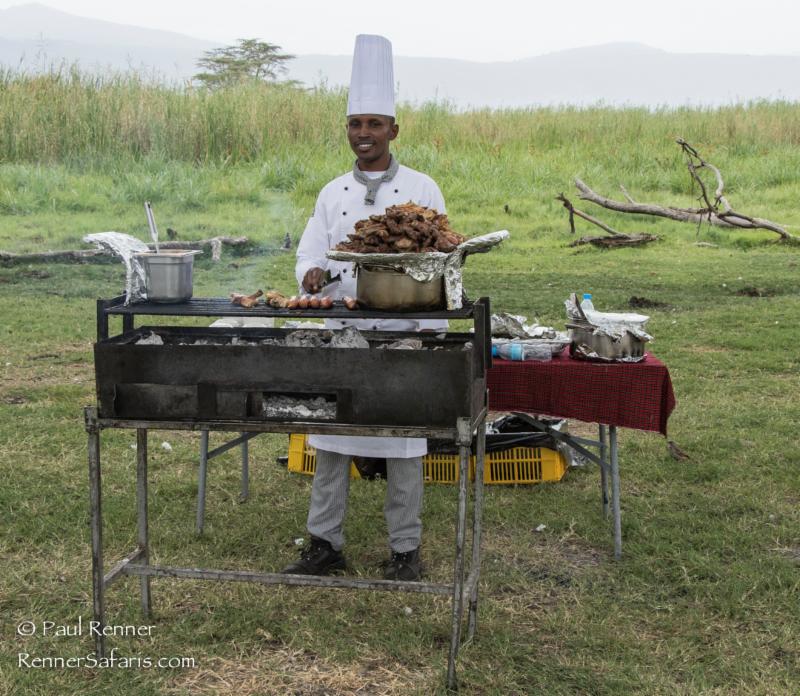
The chef had a delicious barbeque ready for our group upon arrival.

The chef had a delicious barbeque ready for our group upon arrival.
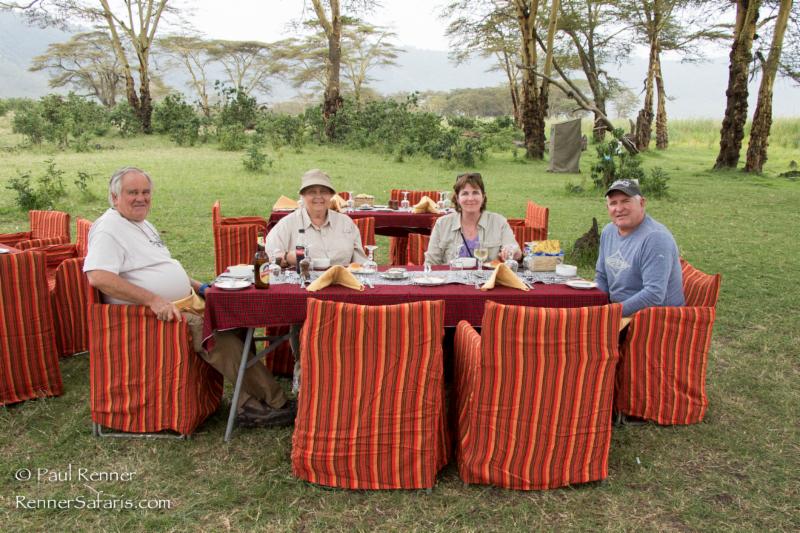
Ready for lunch! Having a hot lunch while enjoying each others company is a great way to rest up in the middle of the day when sightings can be calm in the Crater. If there was action going on we would definitely be there!
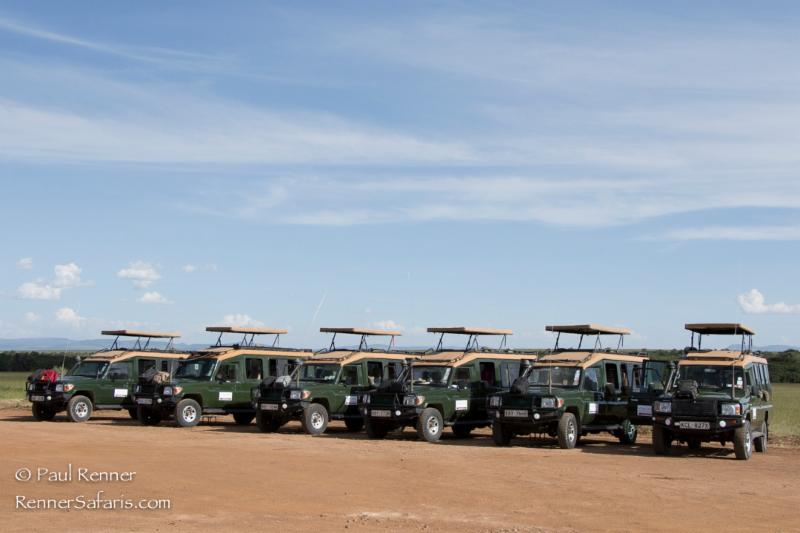
As our plane touches down at the landing strip in the Masai Mara, I always enjoy seeing our vehicles lined up and ready to take us off on our first game drive in the Mara.
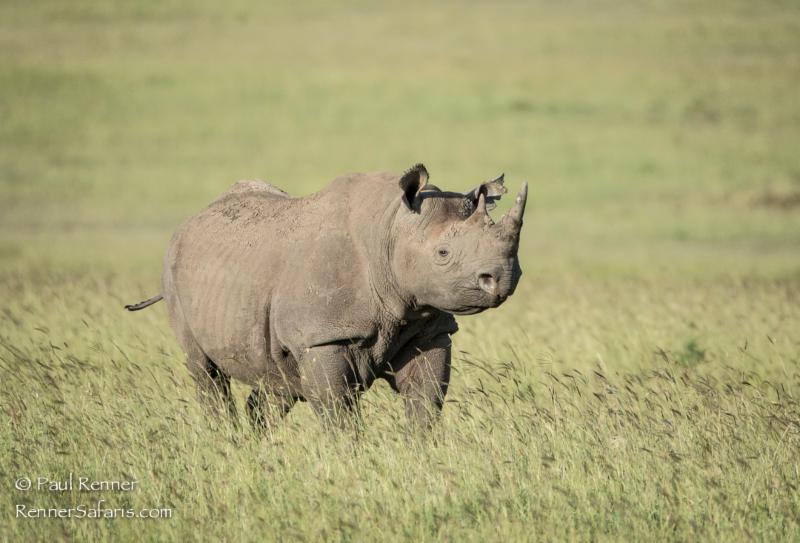
This trip was special. The guides told me there was a Black Rhino not far away! I said let’s go! It had been three years since even our guides had seen a rhino in the area. It really was a special sighting for us!
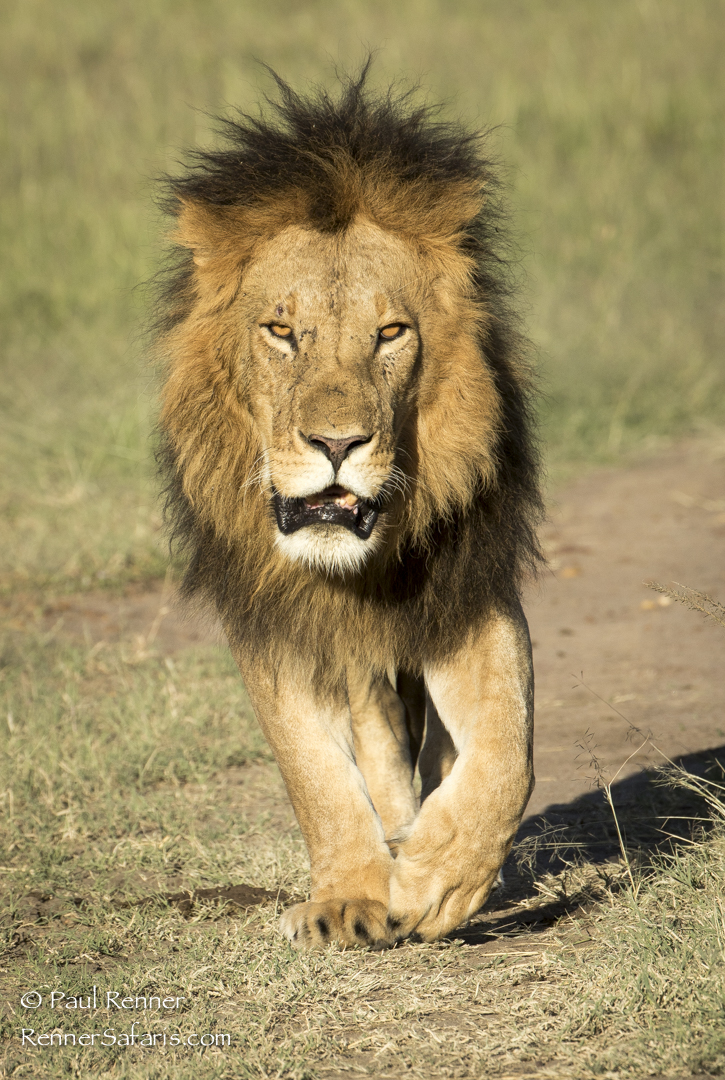
The next morning we were still near our camp when we came upon this beautiful male lion. The Mara is one of the best places on the planet for seeing lions and we were certainly not disappointed on this trip.
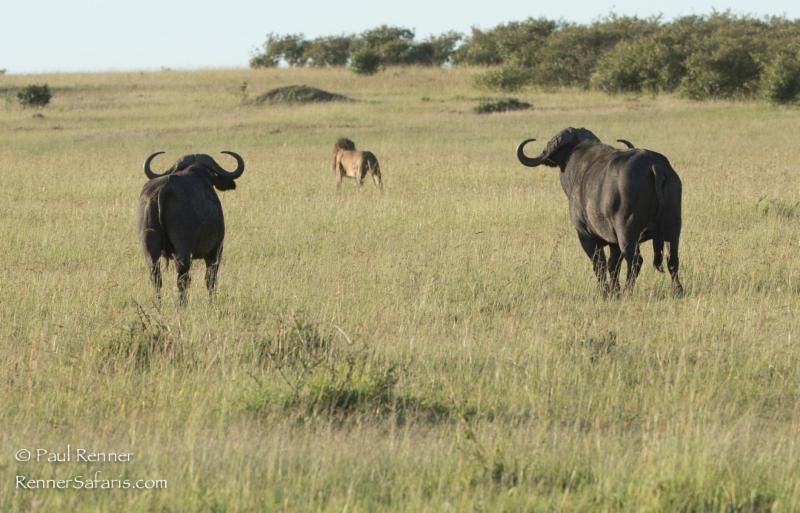
He looked like a big, tough lion, but these two old buffalo bulls wasted no time chasing him out of their territory.
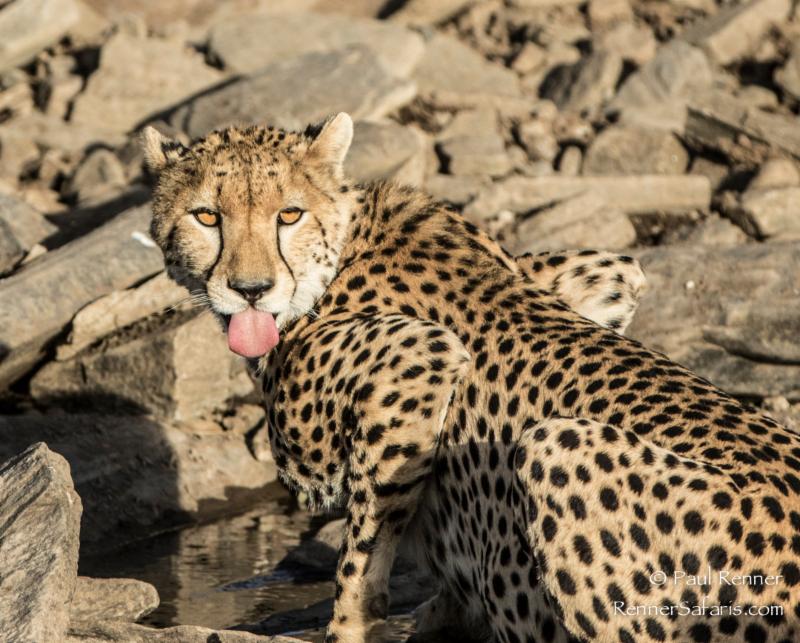
I just enjoy laughing at the humor in nature!

Elephant family grazing on the lush red oat grass near the river.
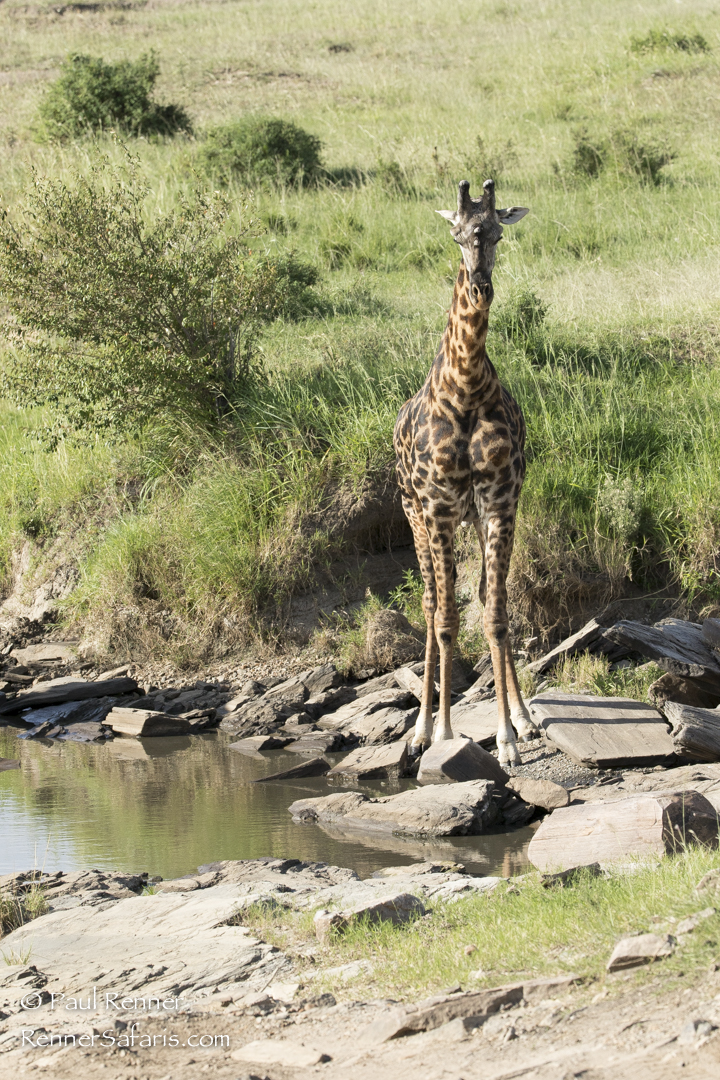
In the Olare Orok riverbed, this giraffe carefully navigated its way around the dangerous rocks.
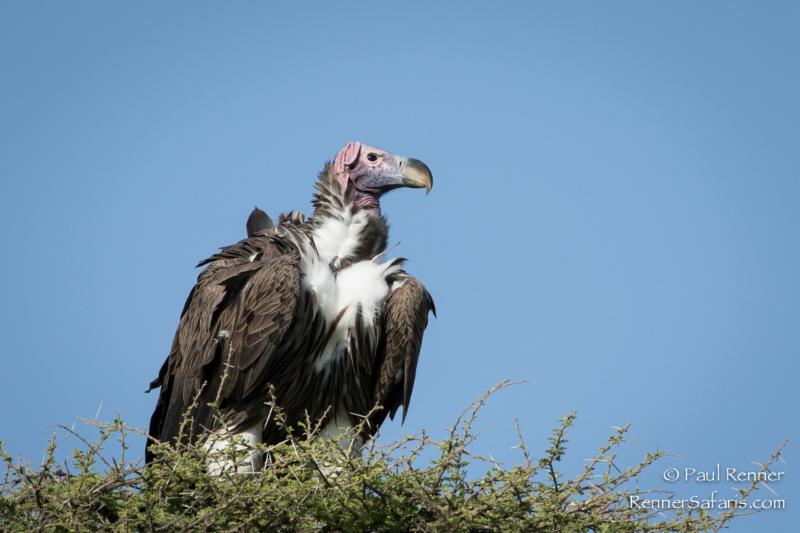
A Lappet-faced Vulture scans the area for something it can eat.
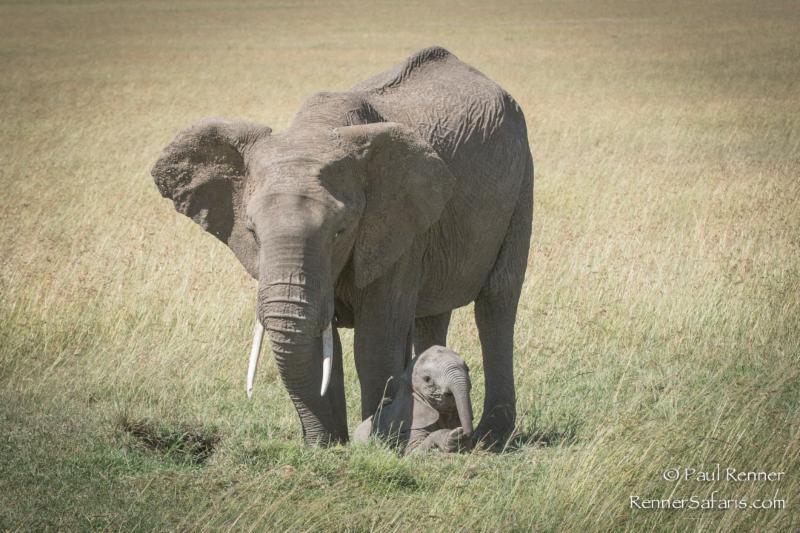
Elephant and her baby enjoy some time together out on the plains.
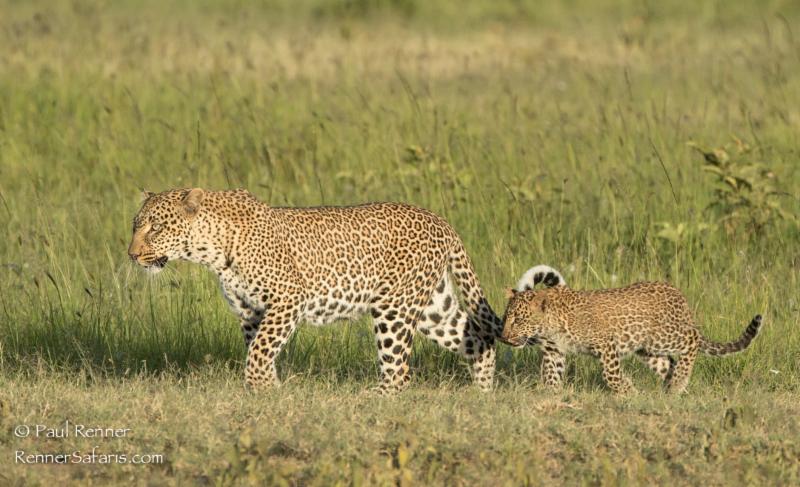
One of my favorite animals to photograph is a leopard. Finding a leopard with small cubs is extremely rare so you can imagine how excited I was when the female brought both of her cubs out to cross an open field between two points in the riverbed. One of them stayed some distance behind making it difficult to get all three in the picture.
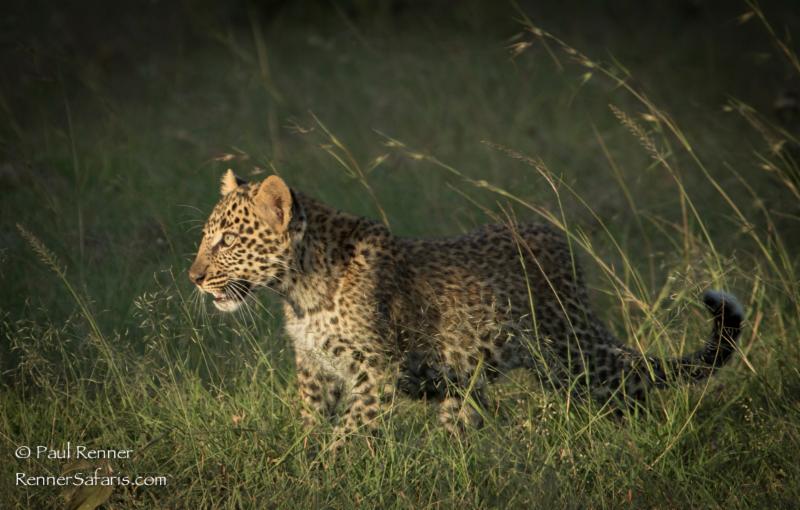
One of the cubs walked through shade created by bushes. As it emerged I saw that it would be walking through a shaft of light. Opportunities like this are rare but I really enjoy them when they happen!
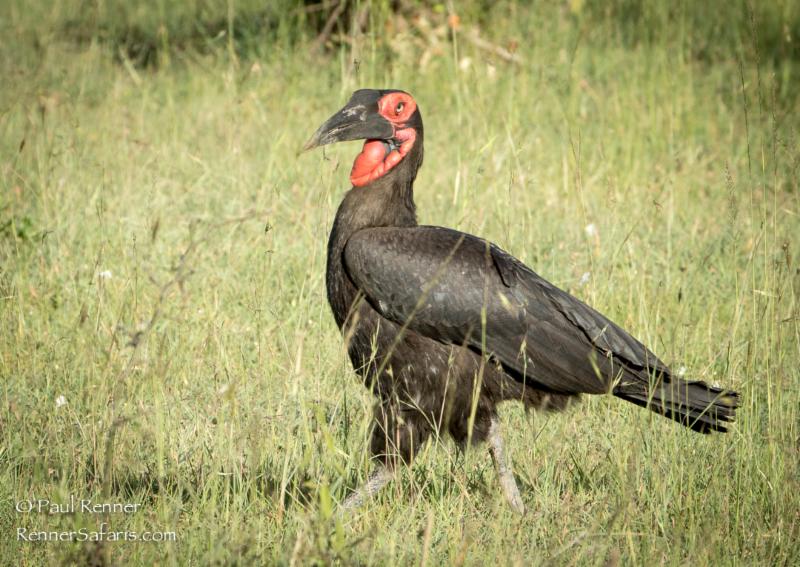
Southern Ground Hornbill
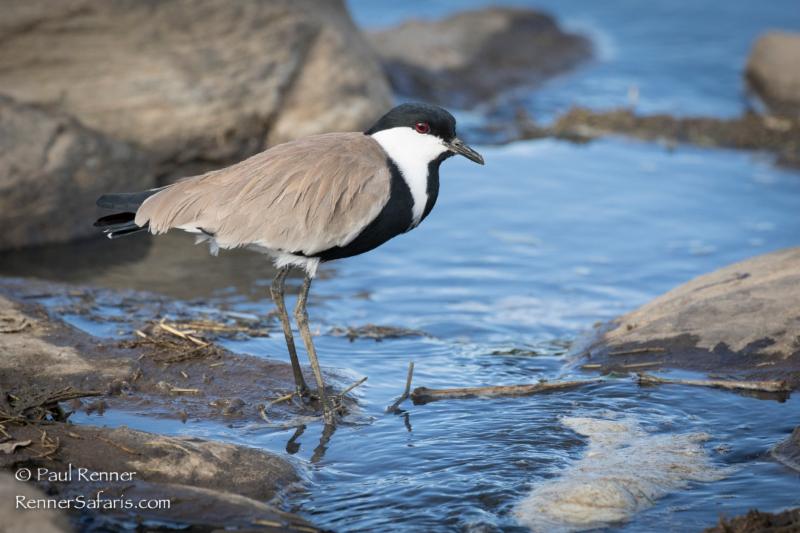
Spur-winged Lapwing at the river’s edge.
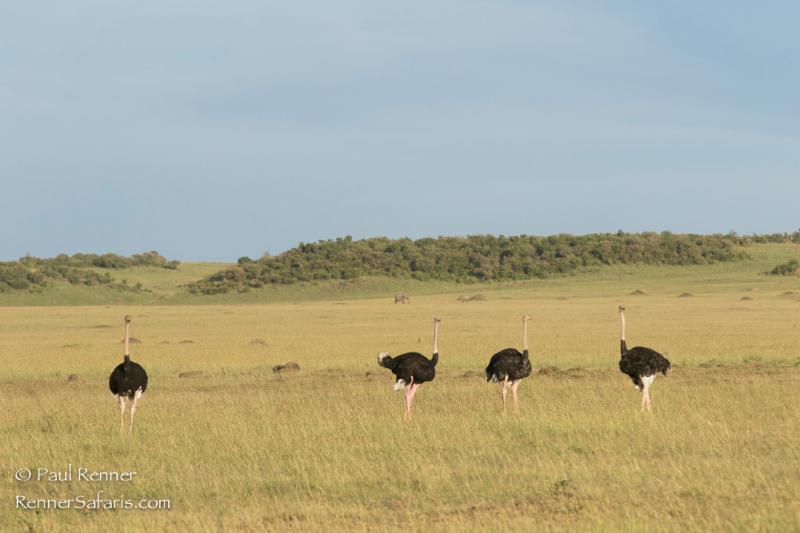
Ostrich and Elephants. Look close for the elephants.
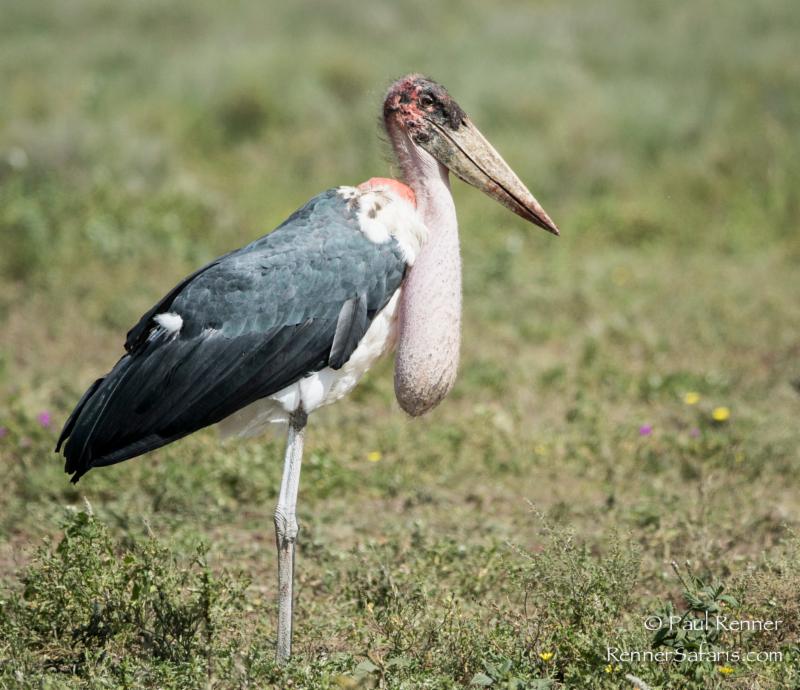
Heading the list of Africa’s “Ugly Five” for obvious reasons is the Marabou Stork. These huge storks, stand 60” tall. They are scavengers and are often seen hanging around lion kills with hopes of grabbing scraps of meat from the other scavengers such as hyenas, jackals and vultures. They usually wait their turn when lions are still at the carcass.
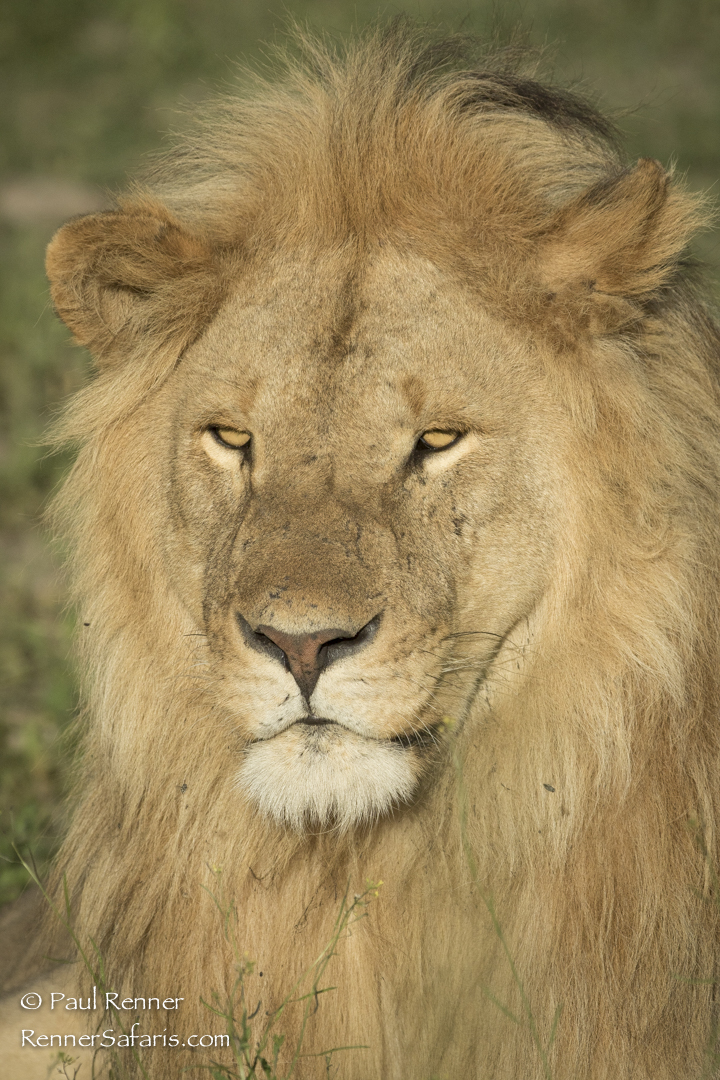
Another handsome lion.
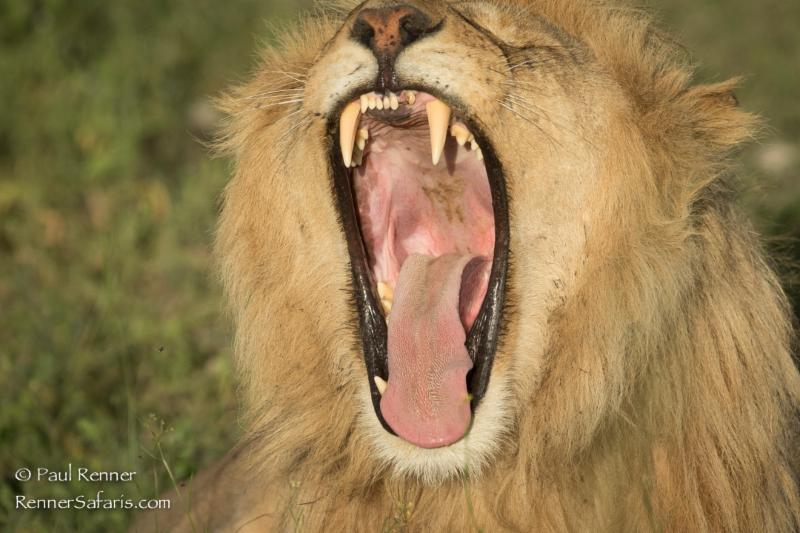
A big lion yawn!
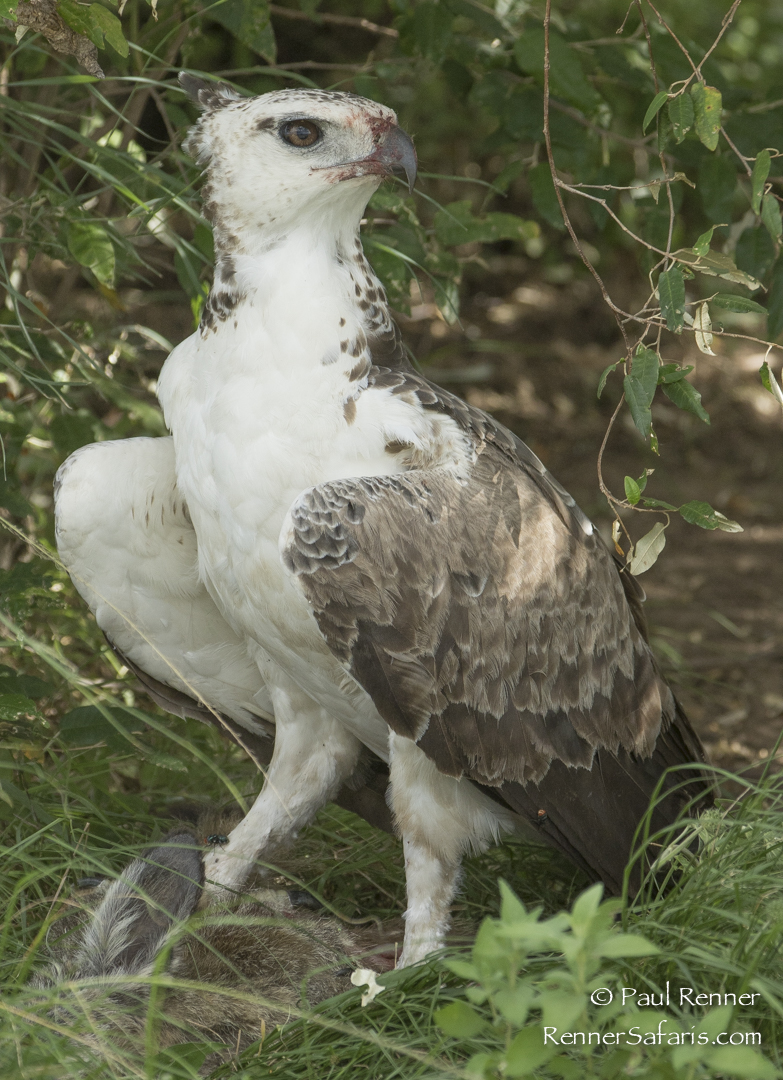
An immature Martial Eagle with a rare catch, a Bat-eared Fox.
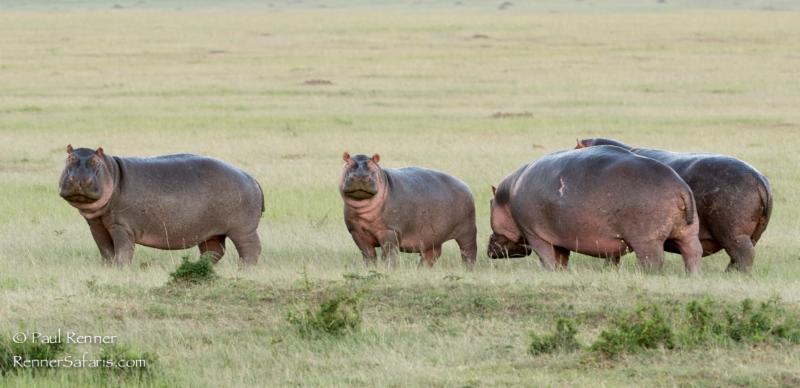
Hippos out for an early morning stroll near camp.
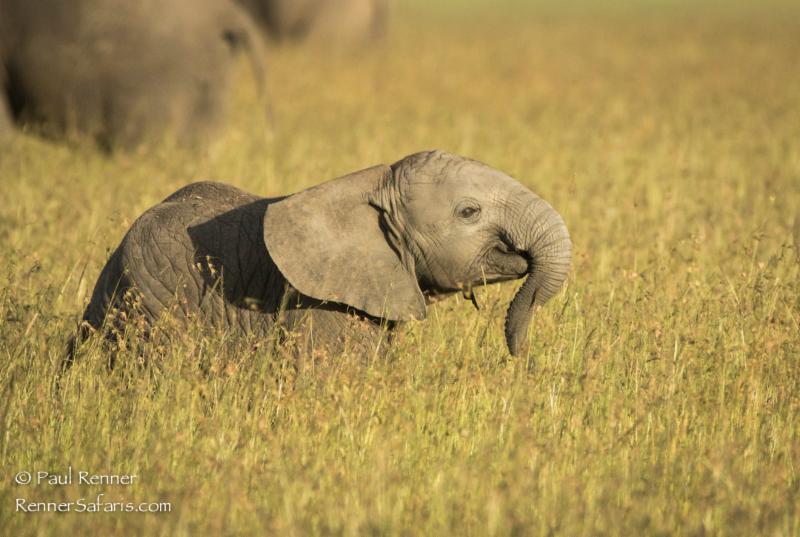
What is this thing you call a trunk used for?
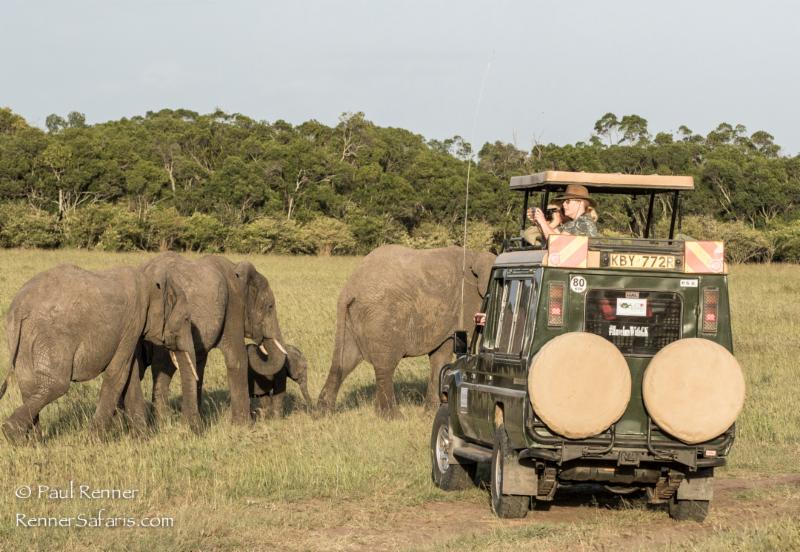
This could be you watching elephants on our safari! Why not join us!
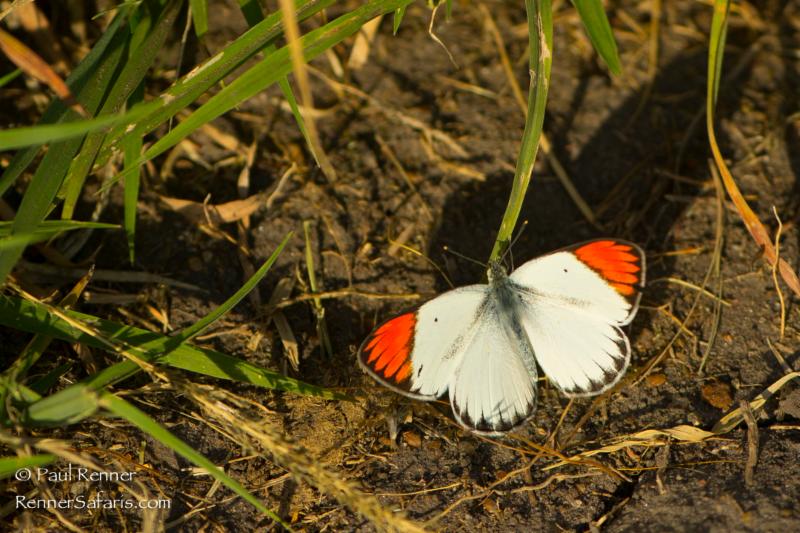
The big cats are always great but don’t overlook the smaller wonders of nature. Sometimes, just stop and quietly look around. You might find a wonderful surprise.
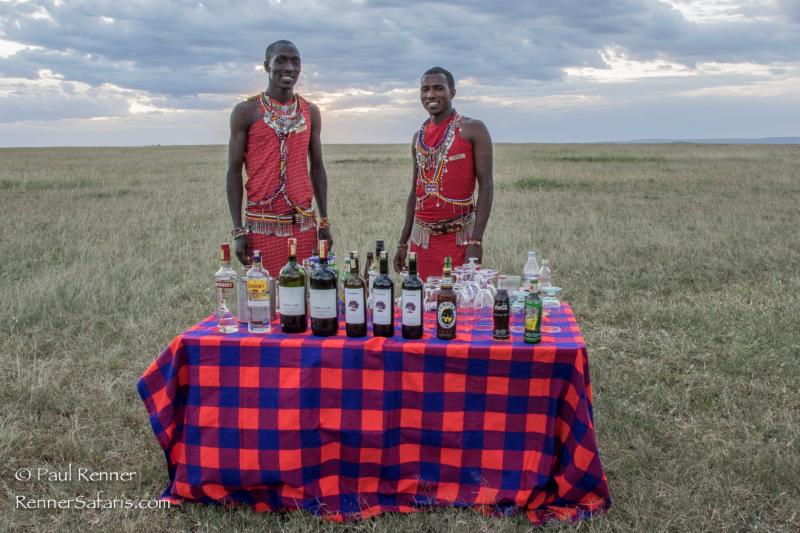
On our last evening, the Maasai barmen from camp surprised us with a sundowner. It was an interesting sight out on the wide open plains of the Masai Mara. It is a very nice way to wind down after an fabulous safari. A big thank you to the staff at the Mara Bush Camp!
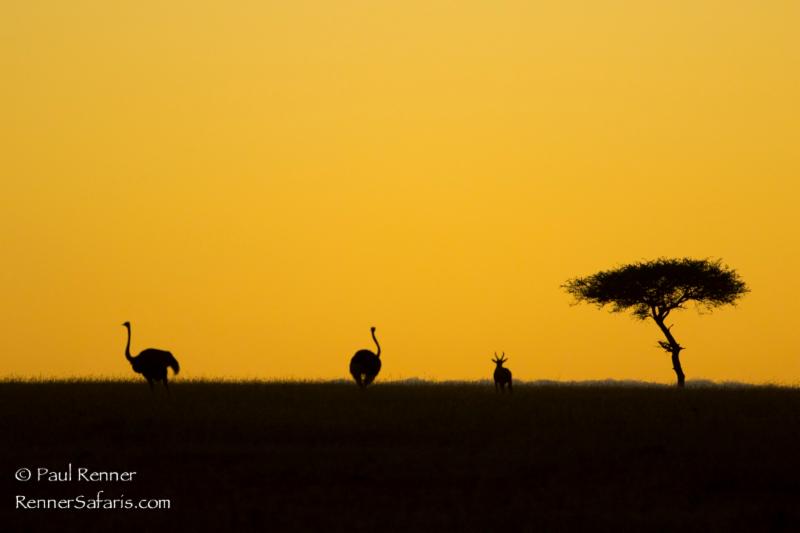
Bring your dreams to reality on a Renner Safari.
The Birth of a Wildebeest!
Some people may find some these photos bothersome so I have put them at the end of the newsletter should you wish not to view them.
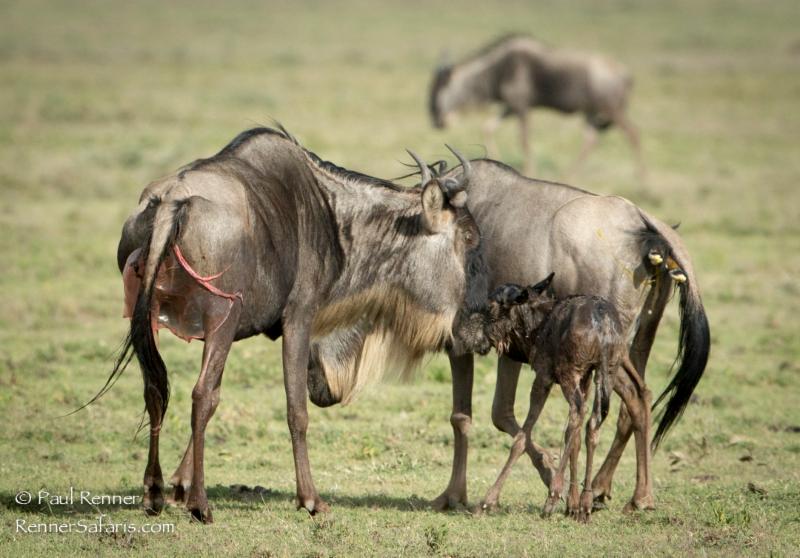
One newborn wildebeest being attended to by its mother and another mother about to give birth.
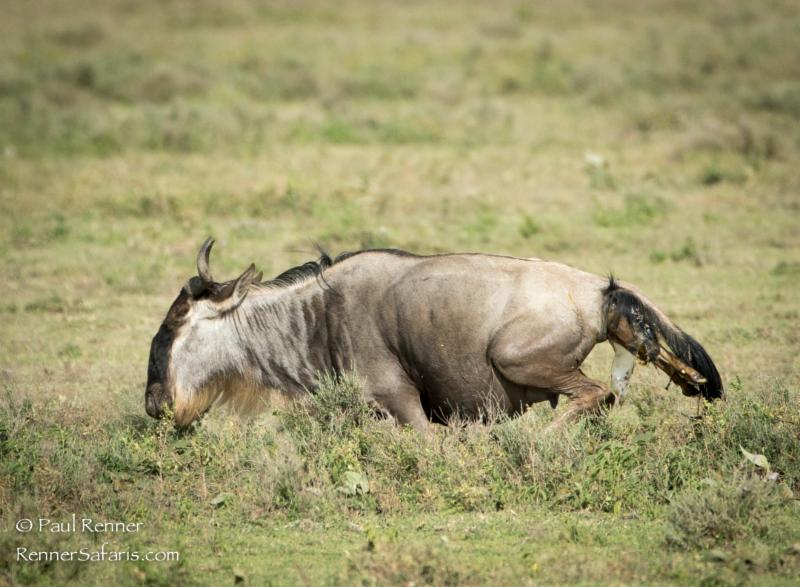
Giving birth out on the open plains.
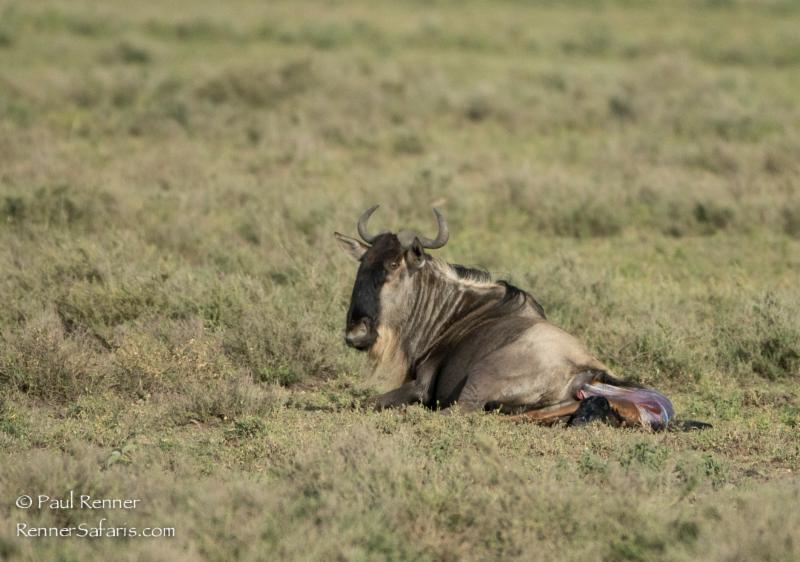
One final push and the baby is out!
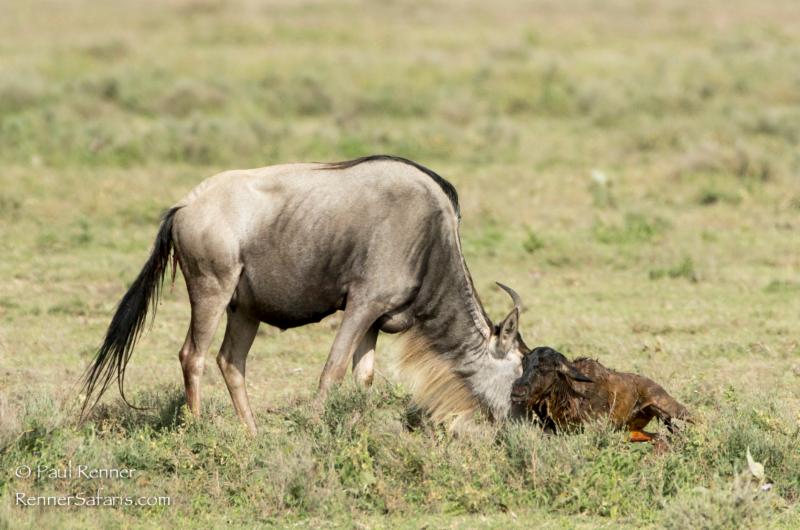
The mother tends to the newborn baby.
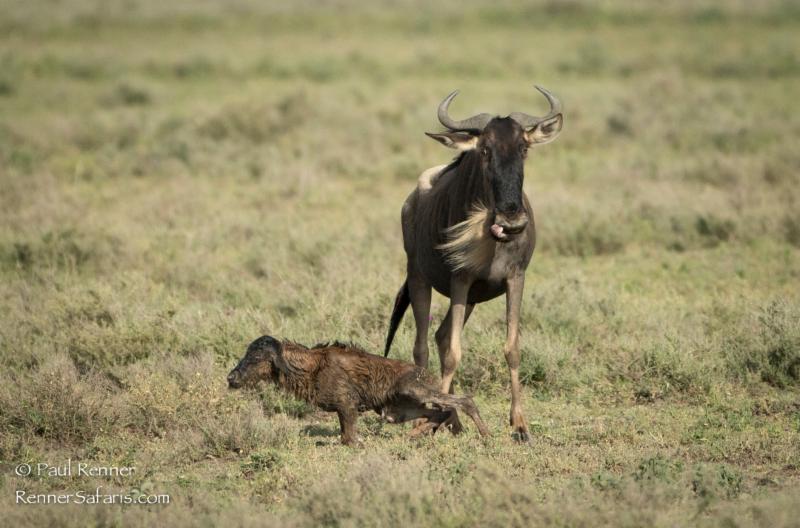
On rubbery looking legs, the baby immediately attempts to stand.
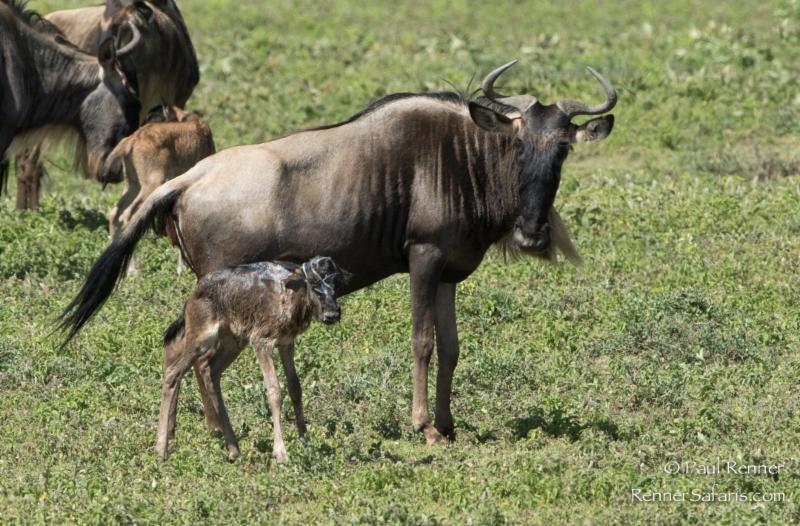
Two and a half minutes later this tough little guy, though unsteady on its feet, is standing on his own. This usually takes about five minutes, so this one was quick. Ten minutes after birth they can run with the mother if necessary! It is one of the miracles of nature!
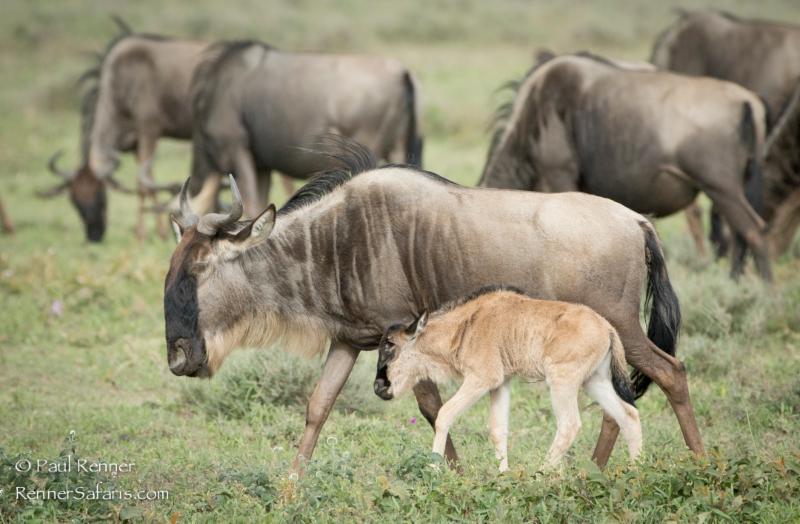
A day later the baby is cleaned up, dried off and ready to move on with the herds.
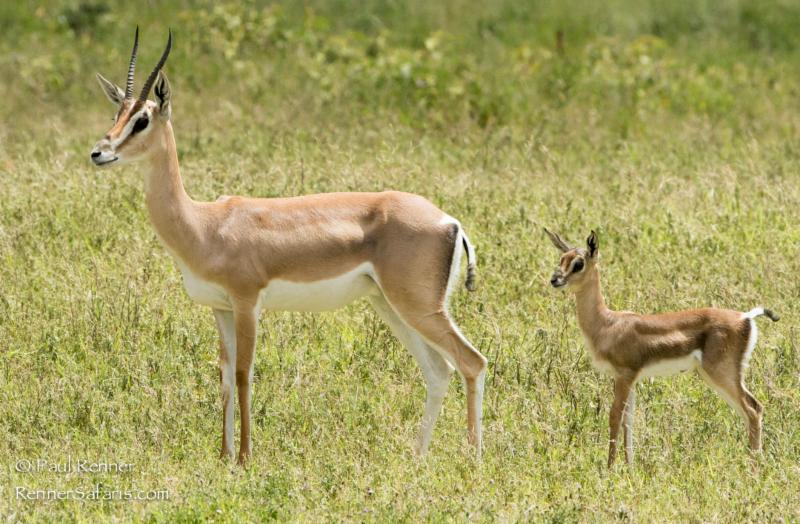
Grant’s gazelle and her baby.
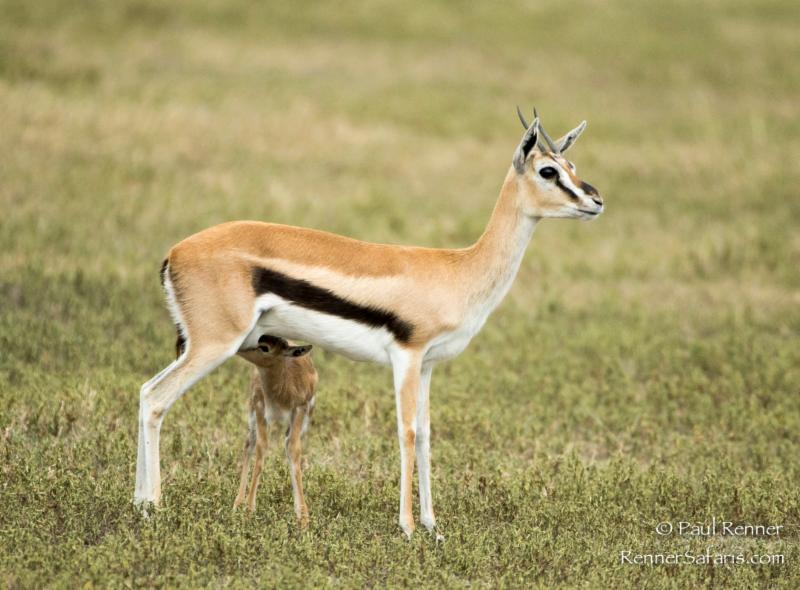
Thompson’s gazelle nursing her young one. In February, new life abounds on the East African Plains. It is a wonderful time to be there and see the new lives.
I hope you will join me on safari in the future for your African safari adventure of a lifetime! May your days be filled with fantastic photo adventures and as always, remember to enjoy each day.
~Paul Renner
Our 2019 safaris were all sold out however we have had a room open up for a couple or two people sharing the room on our safari to Botswana and Zambia May 10 – 27, 2019. Please contact us immediately if you are interested. I will post the 2020 safari details and pricing after we receive them in the next few months. I like to wait to receive the actual pricing from Africa so that we can keep or prices more competitive. I would rather not guess high just to get our prices out earlier. These safaris are definitely worth waiting for!
We are excited to announce that for the very first time we will be running a photo expedition to the Pantanal in Brazil, South America. This coming August we will be on a quest to photograph jaguars, caiman, ocelots, capybara, anteaters, armadillos, monkeys, and a vast array of spectacular birdlife including toucans, parrots, macaws, caracara and many more. We will also be visiting Iguazu Falls, the most spectacular waterfalls in the world! The Pantanal offers the finest wildlife viewing in the Americas. Overlooked by history, the savannas and forests of the largest freshwater wetland in the world protect countless mammals, reptiles and birds. But above all, it is the refuge for the mesmerizing Pantanal Jaguars. Let us show them to you. The Pantanal is a seasonally-flooded wonderland in the upper part of the Paraguay River watershed.
This is going to be a small group of six travelers. Five spots have already been filled. One (1) spot is available for a single man willing to share the room with another gentleman to avoid the cost of the single supplement. This is going to be an exciting adventure. Please call me at (949) 295-3136 should you be interested in joining us on this amazing trip.
Join Us
For information regarding safaris and reservations call BEST SAFARIS
Prem Sharma or Gaby Gurrola
Phone: 714-349-7112
e-mail: info@bestsafaris.com
CST # 2073854-40
